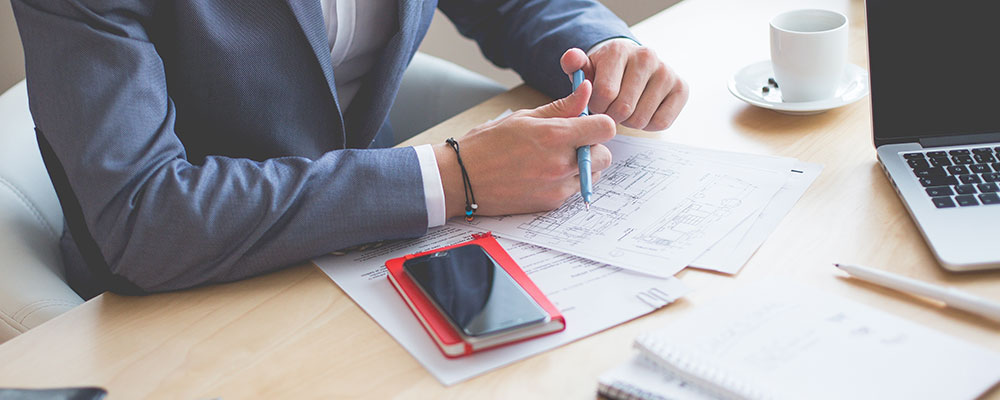You abruptly learn there are many things you don’t know after finishing design school, be it a degree or short program. Entering the job market, and getting your first job are daunting enough as it is, then you realise you could have been better equipped with certain skills.
In the spirit of learning and growth these are some of the gaps I realised there were in my design degree (which I completed almost 10 years ago). I’ve also noticed similar knowledge and skill patterns with new graduates I have worked with. This is my list of 5 topics design programs aren’t covering (but should) Tweet this

1. We’re all learning
There are two parts to this point:
- What you’ve learned is already outdated, and
- We’re still working it out.
The digital, design and UX landscape is changing everyday. While you’re coming to grips with how things work – so are we! What we learned as current and standard practice a year ago has already changed. It’s tough and it’s frustrating, but at the same time it is challenging, rewarding and fun. We’re still working it out (and sometimes faking it until we do).
At the same time, each agency will approach processes and problems in a different way. There is no one answer. It also means if you ask two industry experts the same question, you could get completely different answers. A job doing interaction design at one agency is a different thing at another agency – even though they share the same job title. That goes for every role: UX, UI, content strategy, IT and development.
Learn to adapt and apply your skills and knowledge throughout your career. I’m still learning and growing every day!

2. Design is a customer service role
Designers are providing a service and with it comes a process. We focus all of our energy on the final outcome: the website, product, or other design deliverable. The journey to finished product can be a struggle for both the designer and client – but often the client side isn’t considered. Frustration through the journey will result in a dissatisfied client (no matter how beautiful or effective the result was).
I love this ideal – and it perfectly sums up how I feel about design:
“If we aren’t helping our customers reach their goals, we’re doing something wrong!”
– Helen Shaw, Unbounce Customer Success Manager (Source)
We are creative problem solvers, designing communication, experiences, user-flows and systems. Apply that problem solving brain to your own customers’ experience. The biggest problems you will solve in your career aren’t design problems. Customer service experience and compassion will go a long way in helping your design career.

3. Dig those trenches
Starting out your design career you will have to dig some trenches. That means putting in the hard yards with production tasks, exporting artwork, making countless client changes, typesetting documents, populating websites – the list goes on. These tasks can help with your understanding and development, if approached right.
When I started my first design job, I was tasked with typesetting a 96-page book. I went through every single character and every single paragraph and made sure spacing was correct, checked for inconsistencies, that there were no widows, and that every en-dash and em-dash were correct. It took over 16 hours, but I learned so much about typography and I became familiar with several keyboard shortcuts that continue to help me be more time efficient.
In my first web agency job, the first task was populating a website – taking the text and images from the old site, and copy-pasting them into the newly built site. Mostly mind-numbing work. But through doing that I learned an incredible amount about how the WordPress back-end works for a website and understood client pain-points in adding their content.
Had I have not been invested or had half-assed those tasks, I wouldn’t have the knowledge and skills I do today. So dig those trenches and learn the tools! Work hard and do your best. You will reap the rewards later in your career (as well as gaining mad respect along the way).

4. Using stock photography
A lot of clients can’t supply or afford custom photography, which means stock photography becomes a necessary evil. No one likes stock photography, not even the client. Although not ideal or a desirable skill sourcing stock images, that don’t look generic, becomes a necessity.
Sourcing and using that great image on Google or Flickr for a school project might have been acceptable – but unlicensed images won’t cut it in an agency. You may think that finding the photo you want in stock isn’t difficult, until you have to do it ten times a day. Having to complete a school project that required the use of stock photography would have introduced me to the issues and struggle earlier than in my first paid design job. You can’t burn endless hours finding the perfect stock image when your time is billable.
In the end, using a licensed stock photo, icon or illustration is always better than stealing – the creator is given payment for their work. Don’t steal work. Ever.

5. Plagiarism
There is a belief that if you take someone else’s work and modify it, you can then claim it as your own and use it. That isn’t true.
Images that are available on the internet are not free game. Intellectual property, copyright restrictions and usage restrictions still apply. I’ve even come across this fallacy in agency settings. Plagiarism is plagiarism. There is a difference between taking inspiration and blatant copying. Stealing work is never acceptable and is even more dangerous when a client is paying.
Keep swimming
There is an ocean out there full of budding design graduates. I have seen many design colleagues, even the most talented designers, move into other industries because of the competition. The easiest way to not succeed in the industry is to give up. It’s tough but keep at it and you’ll do swimmingly (and make sure you blog about it!)
Those are my thoughts and insights on entering the design industry. Have any others to share, or similar experiences? I’d love to hear them! Time to brush up on those skills for an advantage over your classmates.
If you’ve read this far, it deserves your share on social media:


